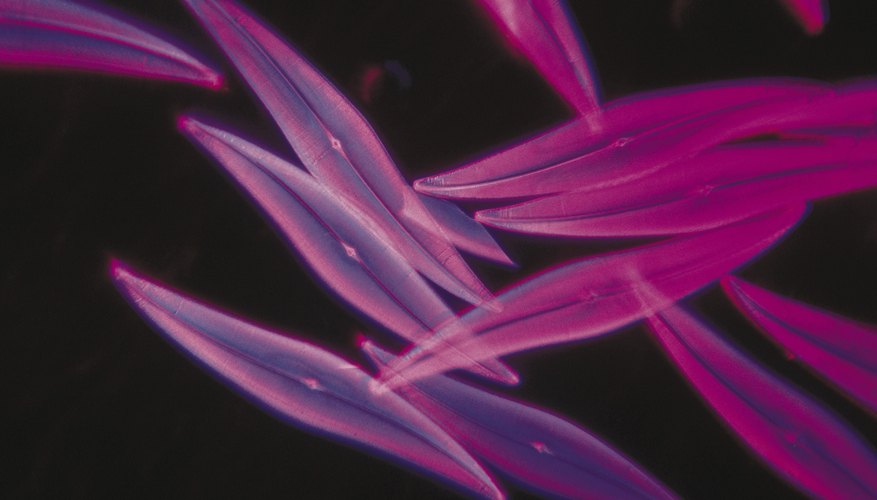Carbon Cycling in Aquatic Ecosystems
By Maria Kielmas; Updated January 09, 2018
Ablestock.com/AbleStock.com/Getty Images
Carbon is an element that is the basis of all forms of life on Earth. It moves through the atmosphere, lithosphere, biosphere and hydrosphere. The carbon cycle regulates the Earth’s global temperature and controls the amount of carbon dioxide in the atmosphere. As the carbon recycles, it is reused by numerous organisms. Aquatic ecosystems are those that contain plants and animals dependent on water.
Marine
Marine ecosystems are the largest ecosystems on Earth. The oceans cover 71 percent of the Earth’s surface and produce 97 percent of the world’s water. Salts, mostly sodium chloride, comprise 85 percent of dissolved matter in the oceans and are the key component that separates marine from other ecosystems. The most important subdivisions of marine ecosystems are oceanic, deep-water, estuarine, coral reefs, inter-tidal and coastal ecosystems. Living organisms range from bacteria, algae, corals, bivalves, fish and mammals.
Freshwater
Freshwater ecosystems contain drinkable water but little or no salt. The major subdivisions are lakes and ponds, rivers and streams, reservoirs, wetlands and groundwater. Living organisms include algae, fish, amphibians and plants.
SCIENCING VIDEO VAULT
Volume 0%
00:00
01:30
Carbon Source
The main source of the Earth’s carbon is carbon dioxide gas from submarine volcanic eruptions. Submarine volcanoes account for over 80 percent of the Earth’s volcanism. These occur at mid-ocean ridges that run along the central parts of the Atlantic, Indian and Pacific Oceans, together with volcanism around subduction zones such as the entire edge of the Pacific Ocean. Some of this carbon dioxide dissolves in the ocean. Another part escapes into the atmosphere through evaporation of the ocean. A further part is absorbed by marine biomass such as plankton, algae and bacteria.
Photosynthesis
Plants and algae in freshwater and phytoplankton (marine organisms and algae) use the sun’s energy for photosynthesis. They convert carbon dioxide and water they have absorbed into sugars and oxygen. They store the sugars as energy and release the oxygen back into the water. Phytoplankton activity is restricted to the first 150 feet of water in lakes and seas. Many areas of the ocean do not receive enough sunlight or are too cold.
Fish
Freshwater algae and marine phytoplankton are food for fish. Fish inhale dissolved oxygen from the water with their gills and exhale carbon dioxide back into the water. They store the carbohydrates they have eaten as energy and excrete inorganic calcium carbonate and bicarbonate. These compounds are carried by currents to the deep ocean where they precipitate.
Decomposition
Dead organisms decompose on the river, lake or sea bottom and emit carbon dioxide. The gas recycles into the freshwater and sea water where other organisms absorb them or the gas evaporates into the atmosphere.
Precipitation
Rainfall dissolves carbon dioxide in the atmosphere and returns it as a mild acid to the ground and water systems. On the ground, the rain weathers exposed carbonate rocks such as limestone. Limestone is the remains of inorganic carbonates that precipitated as excreta from fish and the skeletons of dead fish, corals or other marine life. The Earth's tectonic forces combined with climate change over geological time exposed the carbonates on the Earth's surface.
Run-Off
The rainwater accumulates beneath the soil as groundwater and runs off via rivers and lakes into the seas. Its carbon dioxide content is absorbed by freshwater and marine organisms for photosynthesis and the aquatic carbon cycle resumes.
No comments:
Post a Comment